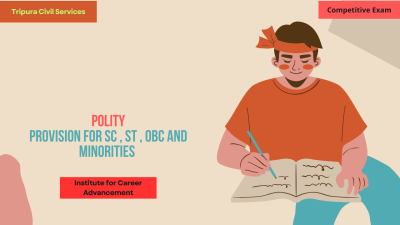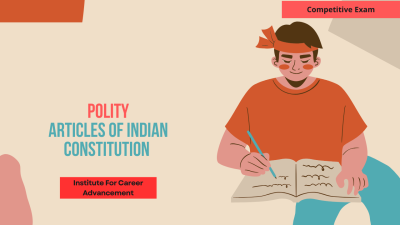Provision for SCs , STs , OBCs and Minorities
Provision for SCs (Scheduled Castes), STs (Scheduled Tribes), OBCs (Other Backward Classes), and Minorities in India refers to affirmative action and special measures designed to promote social, economic, and educational development of these historically marginalized groups. These provisions include: Reservation: Specific quotas in educational institutions, government jobs, and legislative bodies to ensure representation and equal opportunities. Scholarships and Financial Assistance: Targeted scholarships, grants, and subsidies to support their education and economic empowerment. Legal Protections: Laws to protect against discrimination and promote social justice, such as the Protection of Civil Rights Act and the Scheduled Castes and Scheduled Tribes (Prevention of Atrocities) Act. Development Programs: Government schemes aimed at improving the living standards of these communities, focusing on health, housing, and employment. These provisions aim to uplift marginalized sections, ensuring equality and social inclusion. ভারতে এসসি (তপশিলি জাতি), এসটি (তপশিলি উপজাতি), ওবিসি (অন্যান্য অনগ্রসর শ্রেণী) এবং সংখ্যালঘুদের জন্য বিধান এই ঐতিহাসিকভাবে প্রান্তিক গোষ্ঠীগুলির সামাজিক, অর্থনৈতিক এবং শিক্ষাগত বিকাশের জন্য পরিকল্পিত ইতিবাচক পদক্ষেপ এবং বিশেষ পদক্ষেপকে বোঝায়। এই বিধানগুলির মধ্যে রয়েছেঃ সংরক্ষণঃ প্রতিনিধিত্ব এবং সমান সুযোগ নিশ্চিত করার জন্য শিক্ষা প্রতিষ্ঠান, সরকারি চাকরি এবং আইন প্রণয়নকারী সংস্থাগুলিতে নির্দিষ্ট কোটা। বৃত্তি এবং আর্থিক সহায়তাঃ তাদের শিক্ষা এবং অর্থনৈতিক ক্ষমতায়নে সহায়তা করার জন্য লক্ষ্যযুক্ত বৃত্তি, অনুদান এবং ভর্তুকি। আইনি সুরক্ষাঃ বৈষম্যের বিরুদ্ধে সুরক্ষা এবং সামাজিক ন্যায়বিচারের প্রচারের জন্য আইন, যেমন নাগরিক অধিকার সুরক্ষা আইন এবং তফসিলি জাতি ও তফসিলি উপজাতি (অত্যাচার প্রতিরোধ) আইন। উন্নয়ন কর্মসূচিঃ স্বাস্থ্য, আবাসন এবং কর্মসংস্থানের উপর দৃষ্টি নিবদ্ধ করে এই সম্প্রদায়ের জীবনযাত্রার মান উন্নত করার লক্ষ্যে সরকারি প্রকল্প। এই বিধানগুলির লক্ষ্য হল প্রান্তিক শ্রেণীর উত্থান, সমতা ও সামাজিক অন্তর্ভুক্তি নিশ্চিত করা।
English
Last updated
Sun, 12-Jan-2025



















